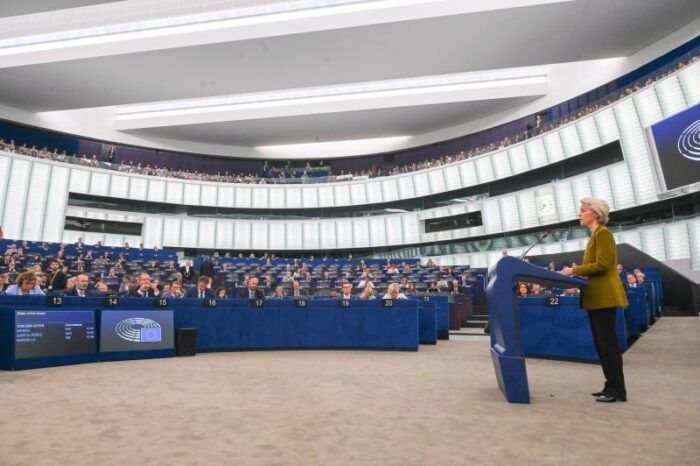The Progressive Post
Orbán’s centaur state

Viktor Orbán is well-known for his opposition to liberal democracy. He is also against the idea of the welfare state. For Hungary, this meant rising inequalities and decaying public services.
It is not uncommon for European politicians to implement welfare state retrenchment. It is rare for a prime minister, however, to openly declare their opposition to the idea of the welfare state as such. Viktor Orbán announced, in 2012, that “our program is to establish, instead of a Western-type of welfare state, which is not competitive, a work-based society”. What ensued was not the elimination of the welfare state, but its restructuring – the broad direction of which is aptly illustrated by French sociologist Loïc Wacquant’s characterisation of the kind of state neoliberalism brings about: a centaur state, “liberal at the top and paternalistic at the bottom, which presents radically different faces at the two ends of the social hierarchy: a comely and caring visage toward the middle and upper classes, and a fearsome and frowning mug toward the lower class”.
Whereas the Orbán-regime has been etatist in some policy areas, regarding price controls and state ownership of utility companies, its fundamental distributive logic can be succinctly summarised: the more you have, the more you get. The decrease in employment protection and the curtailment of the right to strike have favoured capital over labour. The corporate tax rate is the lowest in Hungary in the whole EU. In comparison to many other European countries, income inequality is still not very high. However, Hungary has seen the steepest increase in inequality among all member states, as indicated by the Gini coefficient, between 2010 and 2023.
The introduction of a flat personal income tax, alongside the elimination of low-income tax credits, has led to a remarkable surge in disposable income among the top 10 per cent, while the tax burden on those earning near the minimum wage has doubled on average. Consequently, the tax rate for the lowest earners is among the highest in Europe, while that of the highest earners is among the lowest. Considering both personal income tax and the highest value-added tax in Europe (at 27 per cent), households in the bottom 10 per cent of the income distribution pay a higher proportion of their incomes in taxes than the top 10 per cent.
Family and housing policies follow a similar distributive logic. Although there are generous tax breaks, grants and subsidised credits for home purchases and renovation available to families with children, they systematically provide more benefits to those with more secure employment, higher wages, more savings and more wealth than to those who are more in need. The maximum duration of unemployment insurance has been reduced to just three months, the shortest in Europe. Minimum income protection – the extent to which the government protects its citizens from destitution – is the lowest in Hungary. By conventional measures, the prevalence of poverty is not particularly high, but poverty can be exceptionally deep here: in terms of purchasing power parity, the actual income of those below 40 per cent of the median income is the lowest within the EU.
Historically, the Hungarian educational system has been one of the most inequitable in Europe, failing to ensure equality of opportunity by mitigating the effects of students’ socio-economic backgrounds. The subsequent Orbán governments bear responsibility for their inaction over the past 14 years of de facto political omnipotence and their explicit approval of the ongoing segregation of Roma students. The same applies to public health care, whose problems also predate the emergence of the Orbán regime but have continued to worsen largely unaddressed. Access to healthcare of acceptable quality has increasingly become contingent on purchasing power. The stark contrast between the intolerable conditions in many public hospitals and the obscene enrichment of pro-government oligarchs or the extravagant investments in stadiums has underscored that the issue is not that the country is poor, but that essential public services are underfinanced.
The main goals behind this are easily discernible, just as the absence of some of the traditional goals of the post-1945 European welfare states. The economic priorities of the Orbán-regime have been to reach and sustain high levels of employment, and to ensure ‘competitiveness’ through a capital-friendly labour law and tax environment. Welfare policy has followed two main goals. The first has been to ensure that the state incentivises labour market participation, a goal that has guided both welfare state retrenchments and some positive policy reforms, such as increases in the minimum wage and the expansion of preschool education coverage. The second has been a selective pro-natalist goal: to counteract the long-term trend of population decline by boosting fertility rates – not universally, but specifically among middle- and upper-class households. Reducing inequalities – whether of opportunity or outcome – has simply never been a goal of the regime. This is not quite in line with the preferences of the Hungarian electorate. Comparative data consistently show that the expectation that the government should reduce differences in income levels is particularly strong among Hungarians.
Why have this discrepancy and the ever-more-obvious decay of public services not had a more significant impact on the popularity and electoral results of the governing party? I can only cover two parts of the explanation here. First, the government – through extensive, unscrupulous government propaganda – has been effective in centring politics on other issues, such as the supposed threat that George Soros, ‘Brussels’, ‘the migrants’ and the ‘LGBT-propaganda’ pose. Or, most recently, by convincing much of the electorate that the opposition (and again, ‘Brussels’) poses a threat to peace, and therefore the only way to avoid war is to vote for them.
Second, the available alternative was not convincing because of the unfavourable track record of the hitherto dominant opposition parties and because the liberal opposition has never consistently campaigned around material and distributive issues, but mostly focused on corruption and abstract notions of ‘Europe’ and ‘democracy’ instead. It remains to be seen what might transpire if an opposition were to emerge that is both willing to articulate and capable of credibly representing the widespread discontent with the dismal quality of public services, rising inequalities, and the material insecurity affecting broad segments of the population.
Photo credits: Shutterstock.com/torcsabi




